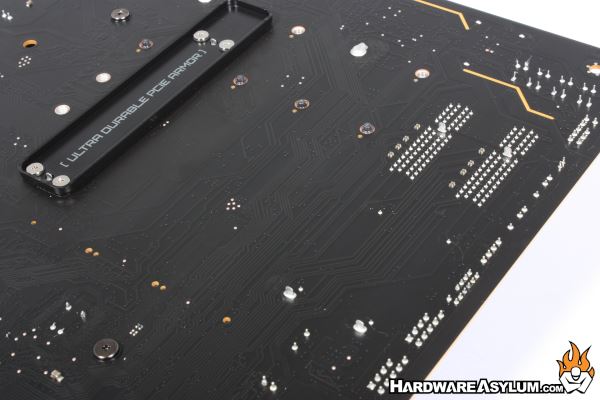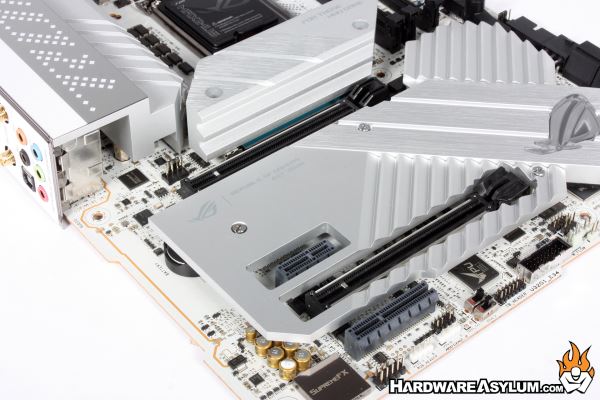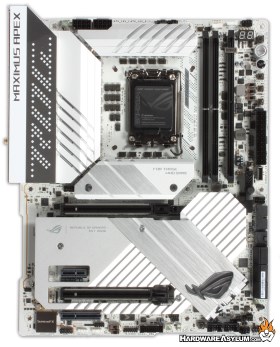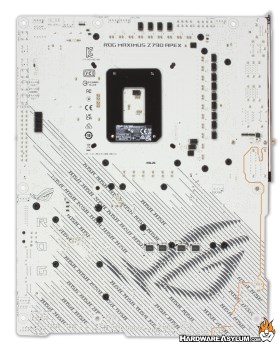You are Building Your PC Wrong
Author: Dennis GarciaHow Can We Change
There are a few ways we can look at this.
First: we can challenge the current status quo and demand that hardware makers optimize their designs to conform to more realistic standards. For instance, real CPU overclocking has been dead for a long time so there is no reason why we need perversely large and complex VRMs. There was a time when a quality VRM ment something but, under normal operation this is just wasted electronics forcing motherboard makers to provide an oversized cooling solution. We also have oversized video card heatsinks, most will tell you that certain GPUs require these massive coolers, and at some level they are correct. However, these oversized coolers have created an entire industry dedicated to providing graphics card support brackets and motherboard makers have been forced to provide massively over-engineered expansion slot reinforcement brackets just to support these oversized video cards.

The Aorus (Gigabyte) Ultra Durable Slot X system, it consists of a reinforced backplate combined with a one piece zinc alloy bracket fitted over the PCI Express slot to provide the strength needed to support quad slot GPU coolers.
Second: we can embrace the current trends and simply build our systems smarter. For instance, instead of building a full ATX system look at building something in a small form factor. We can still use these oversized video cards but with a Mini ITX motherboard as the base and place everything into a much smaller chassis. You still get the same performance but no longer need to dedicate a 3rd of your room to your system build.
Finally: we can reclaim our passion and become a force for change. This might be the hardest of the three options but, is what I feel might be the best for the future of the PC Hardware Enthusiast community.
Optimize hardware designs: I LOVE an overbuilt motherboard as it makes me feel like I am buying something special but, I would rather buy a purpose-built motherboard over one that just has been poorly designed or simply copied from the previous release because that is what the formula says we need to do.
For this we should explore Micro ATX motherboard form factors. If you are simply installing a single graphics card the size and configuration doesn’t matter. Micro ATX is smaller, you’ll get the same support and motherboard makers can save a few bux.
We need better motherboard segmentation and common designs for each segment. High-end enthusiast level motherboards should still support extreme overclocking and multi-GPU setups. A gaming tier might focus on single GPU setups, storage and connectivity. Low-end/Budget boards need to focus on expandability with real expansion slots and storage options. None of these motherboards need to be big and should favor full featured Mini-ITX designs.
Without a clear segmentation we get crossover products that make absolutely no sense.
I was amazed when I first saw the EVGA Dark series of motherboards, this platform was designed for extreme overclocking and fully supported multiple graphic card setups. Kingpin was well known for this video card overclocking records and the motherboard designs reflected this. However, when the Z590 was released, the design changed to focus almost exclusively on memory overclocking making the product effectively worthless as a GPU platform.
ASUS ROG Z790 Apex, this is a re-release version of their popular Apex series. ASUS has taken the stance that APEX and overclocking are for a select crowd and do not bulid many of these boards.

Contrast that with the ASUS Z790 Apex. This board is a wonderful example of what a high-end enthusiast motherboard should be. It supports all manner of overclocking from CPU and Memory using any type of cooling. The motherboard layout is multi-GPU in its prime with proper dual card configurations and yet still supports a massive amount of M.2 slots.
Of course on the opposite side we have boards like the Aorus Z790 Elite X. This is a low-end gaming motherboard. It supports four M.2 drives when the target demographic might need two at most. It features a single 16x PCI Express video card slot and offers two full length expansion slots wired for 4x of PCI Express bandwidth each. Nothing about this design makes sense at this form factor except that people buying this board are doing so based on budget AND their lack of knowing any better.
While I am passionate about computer hardware, the industry as a whole has been on a decline for years. Material costs have gone up and overall sales for custom hardware has declined. For that I don’t see any of this changing simply because the people building computers are not doing this for the enjoyment of building a PC. They are doing this because a friend tells them they should or they find a YouTube video showing how easy it is. The point of the video isn’t so much to educate but to engage their viewers and in doing so they leave out the important research steps.
I cannot tell you how many times I do a build video only to have someone in the comments ask for a FULL build list so they can replicate what I am doing instead of taking the information I am presenting and taking the time to learn and understand why certain things are done.
PC Hardware is very reactive to current trends and yet our understanding of DYI computers is 20+ years deep in lore and intrigue that people are afraid to experiment. While a Micro ATX motherboard makes sense the people buying these boards would end up buying a Micro ATX chassis and then complain that their quad slot GPU doesn’t fit. It isn’t that the label is incorrect it is that the understanding is that things need to match or they won’t work and that simply is not always the case.
So, while current designs may be un-optimized and impractical the reason they exist is because the powerful vocal minority is no longer driving change. We no longer have any real reason to overclock, there is no reason (or support) for multi-GPU anymore and any real need for an expansion card has been supplanted by an extremely innovative USB hardware community. These features which once defined the enthusiast hardware market were extremely good for the time and as we evolve past our influential hardware past, we need to start being vocal again, think differently and build our systems better!



